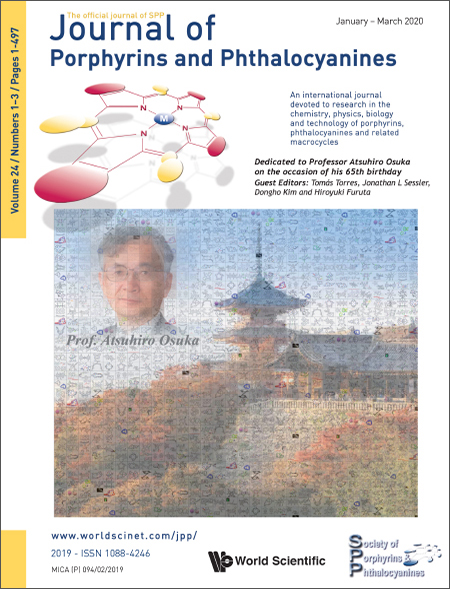Bioconjugatable synthetic chlorins rendered water-soluble with three PEG-12 groups via click chemistry
Abstract
Chlorins provide many ideal features for use as red-region fluorophores but require molecular tailoring for solubilization in aqueous solution. A chlorin building-block bearing 18,18-dimethyl, 15-bromo and 10-[2,4,6-tris(propargyloxy)phenyl] substituents has been transformed via click chemistry with CH3(OCH2CH2)12-N3 followed by Suzuki coupling with 3-(4-(4,4,5,5-tetramethyl-1,3,2-dioxaborolan-2-yl)phenyl)propanoic acid, thereby installing a water-solubilization motif and a bioconjugatable handle, respectively. In toluene, N,N-dimethylformamide (DMF) or water, the resulting facially encumbered free base chlorin exhibits characteristic chlorin absorption (λabs∼412, 643 nm) and fluorescence (λem∼645 nm) spectra with only modest variation in fluorescence quantum yield (Φf) values (0.24, 0.25 and 0.19, respectively). The zinc chlorin derived therefrom exhibits similar spectral constancy (λabs∼414 and 613 nm, λem∼616 nm) and Φf= 0.094, 0.10 and 0.086 in the three solvents. The results together indicate the viability of the molecular design and synthetic methodology to create red-region fluorophores for use in diverse applications.

Dedicated to Professor Atsuhiro Osuka on the occasion of his 65th birthday.
Handbook of Porphyrin Science now available in 46 volumes


